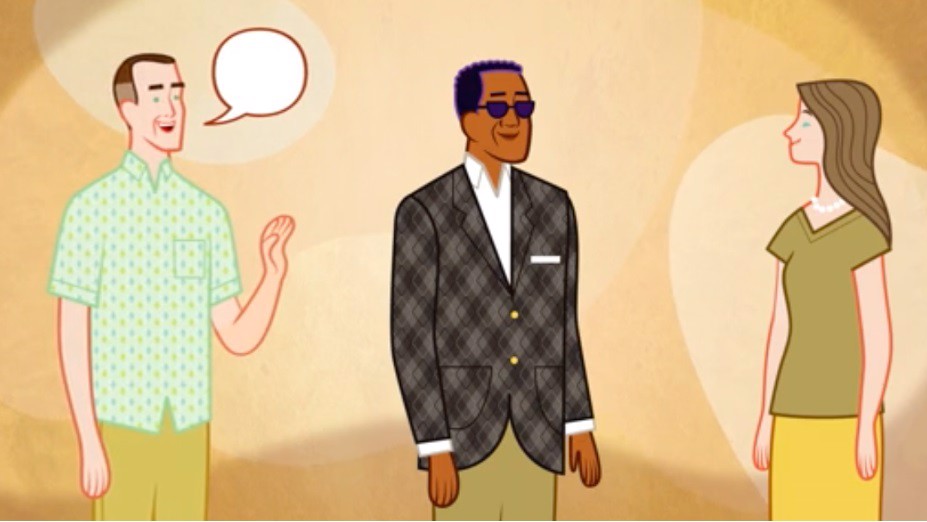
Transcript
We all have a great work to accomplish.
The key to getting this work done is through excellent communication.
This is especially important when working with individuals with disabilities. Here are a few tips of etiquette to optimize communication and help everyone feel part of the team.
In general, there are a few things to keep in mind regarding individuals with a disability. First, do not assume they need help. Before you help them,
ask the individual if they would like assistance.
Avoid touching any personal equipment they may be using without first asking.
There is no need to shout or over enunciate your words to individuals with disabilities,
even if they are hard of hearing. Speak directly to them.
Include these individuals and talk to them as you would respect any person of their given age.
Specifically, if you are talking to someone that is deaf or hard of hearing,
remember to keep your face directed towards them so they can more easily read your facial expressions and lips as needed.
They may have an interpreter to help communicate, but avoid talking to the interpreter. Talk directly to the individual.
Again, you do not need to shout or over enunciate. And if you must get their attention, use a simple wave or slight tap on the shoulder.
Remember to turn on closed captioning in virtual meetings and if necessary arrange to have an interpreter available.
When talking to someone who is blind or has a visual impairment,
make sure to include the individual in conversations and speak directly to them.
If you leave or join a conversation,
be sure to speak up and let them know. If it looks like they might need some assistance, remember to always ask them before touching them or their cane.
They may also have a service dog to help guide them,
but service dogs are not pets, so always ask before petting or speaking to their service dog.
In summary, we all appreciate good communication. When working or interacting with individuals with disabilities, talk to them, communicate, and don’t make assumptions.
Every single one of us has great value to offer, and when we can work together with understanding, communication, and inclusiveness, we can accomplish great things.